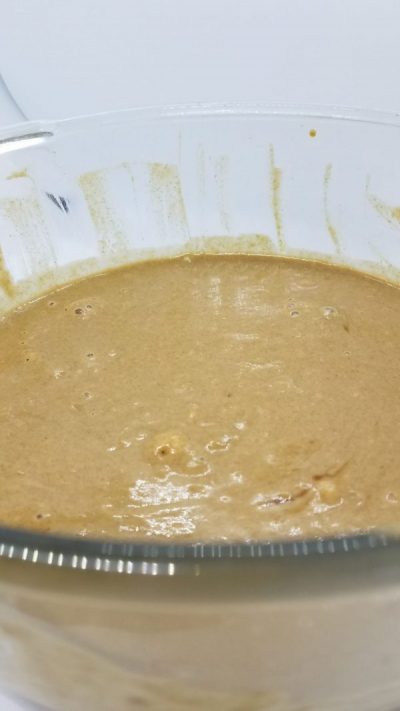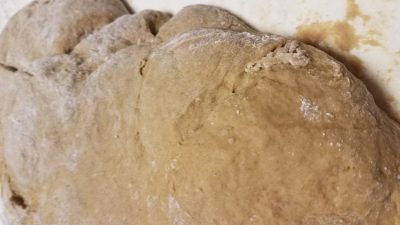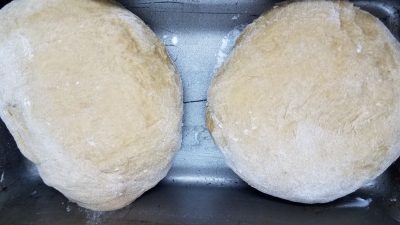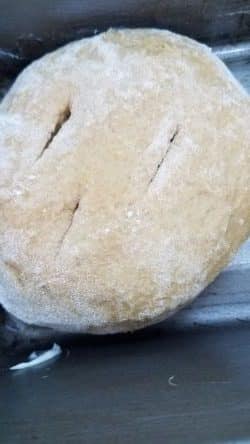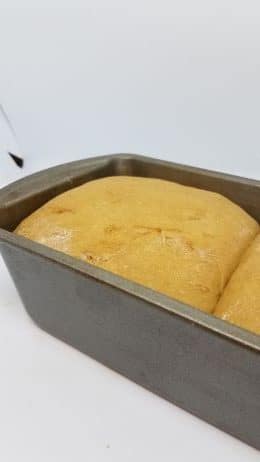Have A Hands On Holiday- Make Swedish Rye Bread
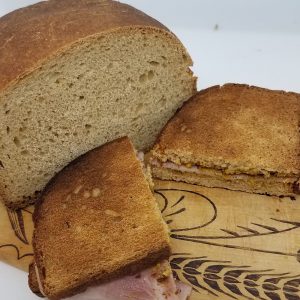
The Season for Greeting and Giving inspires memories of my mother, Betty Best mixing, kneading, baking and giving loaves of Swedish Rye Bread to friends, neighbors, and family. Swedish Rye, a tender, slightly sweet and slightly savory bread provides a satisfying breakfast, toasted and spread with butter and chokecherry jelly or accompanied with scrambled eggs. Then atreat for lunch – a ham sandwich, or an open-faced grilled ham and cheese, or simply slice and eat!
Photo below by Michelle McCormick
See a photo of my mother supervising a pre-Easter egg coloring activity with her twin great granddaughters. Mother now is now 103 years of living.
. 
Why Swedish?
The maternal side of her heritage, her grandparents Anna and Frank Johnson immigrated to America’s shores from Smaland, Sweden in the late 1800’s. The couple met in Illinois where they both were working to pay the costs of passage from Sweden to the U.S.
Anna at age 16 worked for the John Deere family in Moline, Illinois where she served as a cook in the household, and although already proficient in the culinary arts she acquired new skills and recipes that she carried with her to their final destination, Holdrege, Nebraska.
Her original rye bread recipe requires too much time (24 hours from start to finish) and is too complex and way too sticky for me to describe it to you, (and I admit I have never made an edible version of Great Grandmother Johnson”s Swedish Rye although I tried).
In place of my family’s Swedish Rye Bread recipe, I came across a Swedish Rye Bread recipe that replicates it mostly. I quickly learned to make it, and I know you can too!
Why rye flour?
Rye grows in poor soils and cold climates with long winters, thereby rye breads commonly eaten in Scandinavia, Canada, Russia, the Baltic Region. The grain provides soluble fiber, Vitamin E, calcium, iron, and potassium. Because rye berries are harder to refine than wheat, they retain more of their nutrients. Rye berries are significantly lower in gluten than wheat, and speaks toward the necessity to mix the rye flour and an All-Purpose wheat flour..
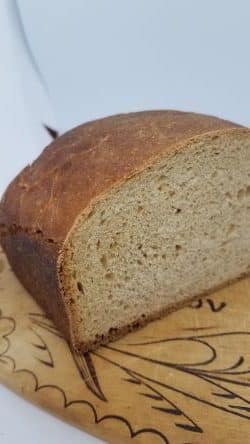
Why Swedish rye flour version?
Most rye flours are designed for dark rye and more coarse- textured rye breads than this Swedish version. Swedish Rye flour appears light brown in color and with a fine, powdery feel to it. Swedish Rye Bread weighs less than the Russian Rye, tastes sweeter and more tender. I suggest ordering this specific Swedish rye flour from Kat’s Korner Market in Axtell, Nebraska. Telephone: 308 743 2434.
They will send the lighter version of rye flour that this rye bread kneads (pun intended). I located the correct rye flour on Amazon grocery although seems it can only be purchased in amounts of 30 lbs.!
Why make it?
-
Mixing, kneading, and baking yeast bread lifts me up and out of the tiresome details of everyday and takes me away to the sacred place of the bread bakers in all of time.
-
Mixing, making, kneading, baking bread connects me with my ancestors from 100 years to 1,000 years past. I imagine the ancient ones harvesting the grains and pounding them into flours and mixing with water (or probably beer) and the wild yeasts in the clay pot, and baking the dough in ovens made of rocks and clay and hot stones.
-
Then for a person like me who lives mostly in her head, writing and planning, making bread connects my hands with my brain and my shoulders with my hands, and I feel like a complete person while engaged in the bread making process.
-
Bread-making is practiced wherever grains grow, and I consider it a useful skill and a delicious, edible art.
-
Bread made in your home with your hands and your wooden spoon gives pleasure and wonder wherever it is served.
-
Wholesome, and greatly entertaining process
How much time does it require?
I schedule myself 3 hours at- home-time when I bake this recipe of rye bread. I’m actually hands-on processing the recipe no more than 60 minutes and the remaining 120 minutes involve time when the bread is rising and baking.
Swedish Rye Bread
Swedish Rye Bread tastes sweet and rich with a hint of savory
Servings 8 people
Equipment
- 2 -3 qt/ glass or clay mixing bowl
- wooden spoon
- bread board or pastry cloth
- scale - I find a scale useful although not essential
What You'll Need:
- 1 cup potato water (water from boiled potato)
- 1 package yeast -Fleichman's dry yeast packets
- 1 medium potato boiled and mashed
- 2 cups rye flour IMPORTANT - "light" rye flour
- ½ cup All-Purpose flour
- 1 Tb. salt
- 2 cups beer I use a dark beer (a stout) although any beer will work as well
Part 2
- ½ cup brown sugar, firmly packed
- ¼ cup butter
- ¼ cup sorghum syrup IMPORTANT - Find sorghum and you may need to order from Amazon.
- 5 cups All-Purpose white flour
How To Prepare:
Part 1 - Rising
- Boil one medium potato in water until soft. Drain the water, setting 1 cup aside.Mash the potato to a smooth mash.
- Cool the potato mash to body temperature. Add 1 cup of leftover potato water (also cooled to body temperature) , the yeast, rye flour, All-Purpose flour, salt and 2 cups of beer (room temperature)
- warm your oven to 150 Degrees, TURN OFF the oven then cover the yeast mixture with a clean towel and set the yeast mixture into a warm oven.
- In approximately 45 minutes, it will double in size and begin Part 2
Part 2 - Kneading
- Mix together and bring to a simmer the brown sugar, sorghum, butter then cool to the temperature of your hand
- When Part 1 has doubled in size, mix in Part 2 and with your sturdy wooden spoon stir in approximately 4 cups of All-Purpose flour.
- Knead the mixture using the palm of your hands and slowly incorporate 1 more cup of flour. Knead until the loaf no longer sticks to your hands or the Board or the pastry cloth. Sometimes you may need to sprinkle in more flour. IMPORTANT: the art of bread baking may be in part determining when enough flour is incorporated into the dough mixture. Too much and the bread tastes of flour and not enough, and it may not hold its shape during the second rise. Knead and slowly dribble flour over the dough until you can rest your hand lightly on the loaf, and the dough doesn't pull out of the loaf when you lift your hand from its surface.
- Butter 3 bread pans or tins of any sort or size.
- Cut the dough with a broad French chef knife into 6 equal chunks. I weigh each chunk, and they will weigh approximately 1 lb. If not snip some from one and add to the lesser.
- Knead each loaf again so it is smooth in appearance and firm enough so that it is not sticky to the touch. Be sparing with the flour.
- Set the balls of dough to the buttered tins. If you are using traditional bread tines, 2 to a tin.
Part 3 Baking
- Lightly butter the surface of each loaf with soft butter
- With a sharp knife pierce each loaf from top to bottom (I don't know the reason for this except it looks appealing when baked)
- Cover with the clean cloth and place in a warm spot in the kitchen for a second rise.The bread has risen when you press the side of the loaf with your index finger, and you make a dent in the loaf and it stays dented for 15 seconds.
- Place the tins in a 375 Degree oven for 1 hour. Test for doneness by wetting a finger and touching your wet finger to the bottom of a tin of bread. Listen for a sizzle. When the bread is toasty brown on top and the tin sizzles when you touch it with a wet finger, take it out of the oven and turn the bread out on a clean cloth or parchment.
- Polish the tops of each loaf with a skim of butter.
Part 4 - TASTE
- While still warm, cut a slice with a serrated bread knife, and take a bite. Always good to spread butter on a warm slice of Swedish rye bread and jelly and jam too.
- Cool, slice and spread with Buzz Savories Honey Mustard or Spicy Beer Mustard and thinly sliced ham. Now you know why you made Swedish Rye Bread, and you did it!
- Allow the loaves to cool, wrap tightly in heavy duty aluminum foil and keep in your refrigerator easily for a week or freeze or best of all, give a loaf to your neighbor.
Photo by Photographer, Don Brockmeier

Please meet Jessica Kraus, a Mustard Merchant at their family business, Lost Way Brewery in Holdrege, NE. http://www.Lostwaybrewery.com
Upon first taste of the original Buzz Savories Spicy Beer Mustard, Mark Kraus, Jessica’s husband and President of the Lost Way Corporation said, “Lost Way’s brew, Olde Creamery Stout is the beer this recipe needs to taste better than the rest.” Spicy Beer Mustard and Olde Creamery Stout partnered from that day onward. Luxurious beers, Buzz Savories Mustard, 100 % Beeswax Candles and curious conversations occur every day at Lost Way.
And..Olde Creamery Stout plays a starring role in the elegant Swedish Rye Bread recipe that you see above:
Lost Way Brewery, 613 3rd Ave., Holdrege, NE 68949 tele: 308 995 0503
Make Swedish Rye Bread and eat lots of Buzz Savories mustards and I wish

PEACE, PROSPERITY AND PURPOSE FOR ALL IN 2020

